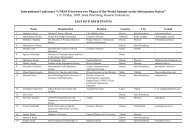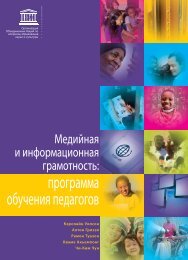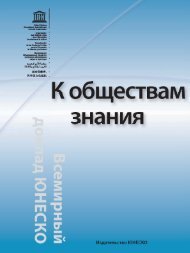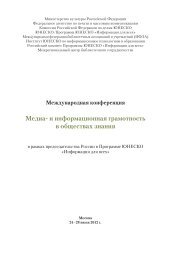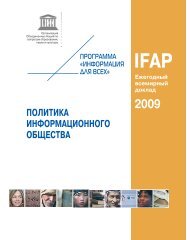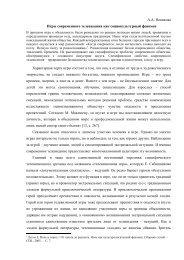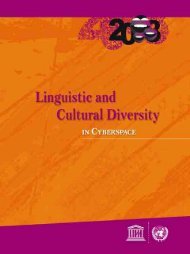Download - РоÑÑийÑкий комиÑÐµÑ ÐÑогÑÐ°Ð¼Ð¼Ñ Ð®ÐÐСÐÐ ...
Download - РоÑÑийÑкий комиÑÐµÑ ÐÑогÑÐ°Ð¼Ð¼Ñ Ð®ÐÐСÐÐ ...
Download - РоÑÑийÑкий комиÑÐµÑ ÐÑогÑÐ°Ð¼Ð¼Ñ Ð®ÐÐСÐÐ ...
You also want an ePaper? Increase the reach of your titles
YUMPU automatically turns print PDFs into web optimized ePapers that Google loves.
Cinematography was also introduced to anthropological fieldwork, but, because<br />
of the technical complexity and the costs of this technology, not systematically<br />
employed to considerable extent.<br />
Over the following decades the phonograph remained in use until the 1940s,<br />
as gramophone recording, though technically superior, was hardly applicable<br />
under field conditions. Audio field recording became only widespread with<br />
advent of battery operated tape recorders in the mid-1950s, which permitted<br />
uninterrupted recording of considerable lengths and quality everywhere in the<br />
world. Similarly, video recording became popular with the advent of “handy<br />
cams” since the 1980s. Though technically inferior to cinematography, even to<br />
8mm amateur film, this was affordable even for private researchers which made<br />
“videotaping” a widespread documentary tool in fieldwork. More recently<br />
video documents became an important factor even in linguistics, to permit<br />
research into gestures and mimics.<br />
As a result of this technological development audiovisual collections<br />
mushroomed and became irreplaceable stocks of primary sources of linguistic<br />
and cultural diversity of human kind. This mushrooming was supported by the<br />
relative affordability of audio and video recording equipment, which lead to the<br />
establishment of collections as part of research institutions, museums, and even<br />
in the possession of private researches. Generally, however, these collections<br />
remained without specific custodial infrastructure, or any preservation strategy,<br />
let alone budgetary provisions. It is estimated that the greater part, possibly<br />
80% of these primary sources, which are the basis of our present knowledge in<br />
many disciplines, are outside archival custody in the narrower sense. Only 20%<br />
of this heritage are professionally preserved.<br />
This system of relative anarchy has worked until recently somehow.<br />
However, audio and video recordings are prone to deterioration and threatened<br />
by format obsolescence. More dangerous than the instability of carriers is<br />
meanwhile the inescapable unavailability of replay equipment, as traditional<br />
analogue, and also single carrier based digital formats, became obsolete. As a<br />
consequence, the industry ceases production of equipment, spare parts and<br />
provision of service.<br />
This situation was anticipated already in 1989/1990 which had lead to shift of<br />
paradigm for audiovisual archiving; first for audio, followed since the late 1990s<br />
by video, and presently also applied for film archiving: The new strategy is to<br />
preserve the content, not the carrier, by transferring contents to digital files<br />
and migrate these files from one IT preservation platform to the next 51 . There<br />
is unanimous agreement that the time window left for transferring audiovisual<br />
51<br />
The principles of this strategy and the practical guidelines for audio and video see IASA-TC 03, 04, and 06.<br />
152




